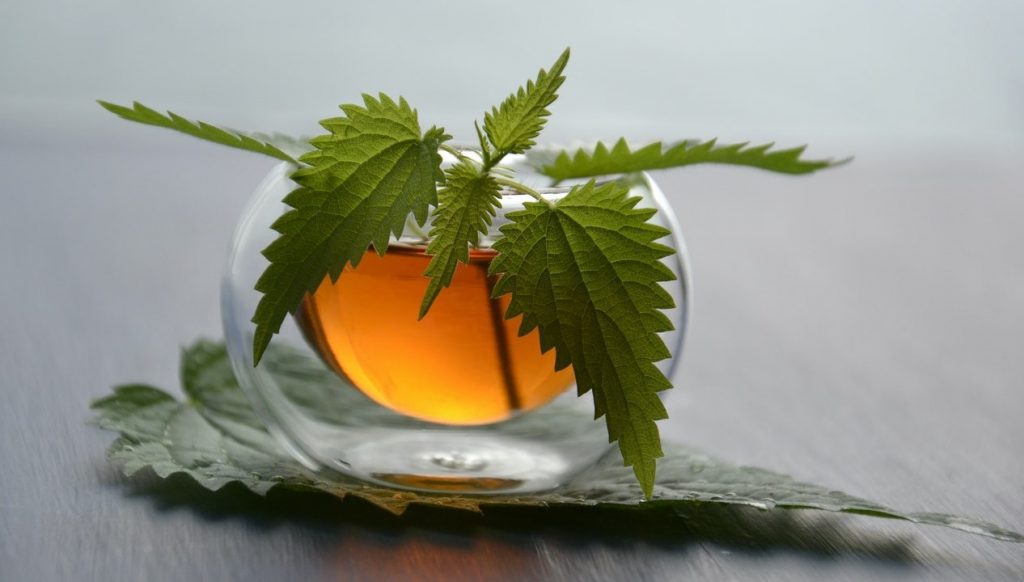Get past the sting for a cup of tea
(YES! Magazine | Valerie Segrest) A cup of Nettle tea can help fortify blood, build bones, increase energy levels, improve circulation, and decrease inflammation and oxidative stress in the body.
The nettle
Some plants create hard bark, thorns, terrible flavors, or odors to repel predators. The ingenious Nettle has its sting, from a combination of chemicals packaged in tiny silica hairs adorning its stems and leaves. Throughout Europe, North Africa, and North America, tenacious Nettle can produce 10,000 seeds per plant annually while also propagating itself via rhizomes. For more than 3,000 years, Nettle has been used as food, medicine, and fiber by Native cultures that revere it for its resourcefulness and versatility.
To know its medicine is to understand why Nettle requires fierce protection from being overconsumed. Decorating itself in acid compounds is how Nettle has cleverly survived for millennia. Nettle concentrates vitamins and minerals from the soil in its body, resulting in easily absorbable nutrition, boasting superior levels of phytonutrients and life-sustaining vitamins and minerals. A cup of Nettle tea can offer 500 mg of calcium—double what’s in a cup of cow’s milk. Fortifying blood, building bones, increasing energy levels, improving circulation, and decreasing inflammation and oxidative stress in the body are a few of the health benefits.
You can find the plants on the edges of ecosystems—the fringe of the forest, the cusp of a riverbank—as it grows its rich nutrient storehouse at the intersection of two worlds colliding. Nettle teaches us how to thrive in a paradox. In disturbed environments, Nettle grows strong, accumulating medicine from the soil and sun and demanding we pay attention to its presence, or pay the price of its burns.
In early spring, look for radiant green shoots emerging from the cold soil and promising the change of season. This is the time to harvest tender leaves for food. Make sure you forage in a clean area that has not been sprayed with chemicals. Using scissors, carefully snip the top leaves at an angle and into a basket. Rinse in a colander using gloves or tongs. If you eat them fresh, they will sting you. But add a little bit of heat, and the sting is denatured.
Three ways
Sauteed greens: Cook with olive oil, onion, and garlic. Finish it off with a splash of vinegar and a sprinkle of sunflower seeds if you’ve got them on hand.
Frozen greens: Blanch them in a pot of boiling water for 30 seconds, then plunge them immediately into a bowl of ice to stop the cooking process. Squeeze the water out and freeze them for later use in soups or whenever you need a frozen leafy green.
Tea: Closer to summer, when the plants have grown taller and more fibrous, dry the leaves in a paper bag for tea. Add 1 tablespoon of dried Nettle leaf to 1 cup of hot water, steeping for 15 minutes up to a few hours. The longer it steeps, the more time the plant has to give up its mineral-rich medicine.
Source: YES! Magazine
You may also like:
Powerful herbs you can grow in your backyard to treat arthritis




